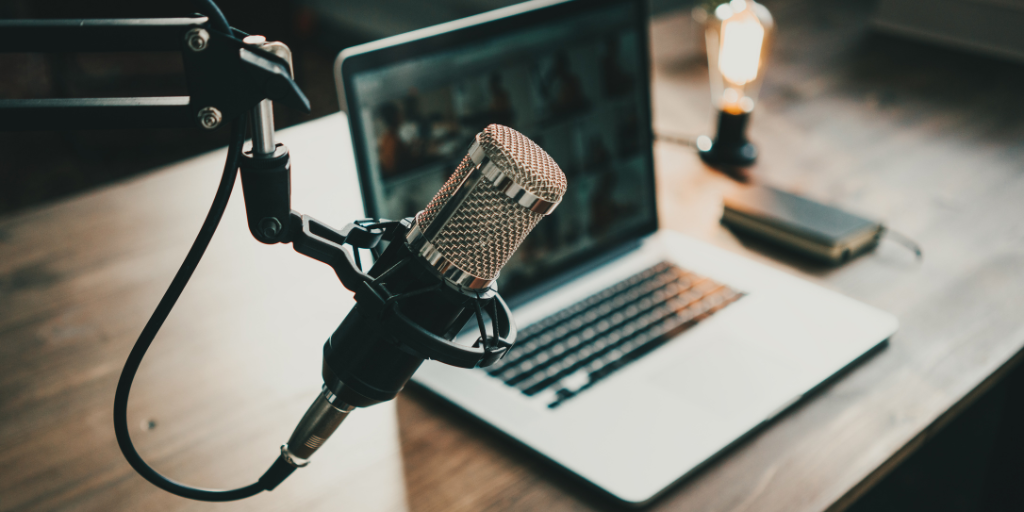
Wondering how to start a Podcast in 2024? You are in the right place.
Starting a podcast might seem overwhelming, but trust me, it’s a lot easier than you think! Even if you're bursting with ideas, have stories to share, or want to dive deep into topics that light up your passion, podcasting is a powerful way to connect with listeners.
You don’t need to be a tech genius or have a fancy studio to get started. With the right equipment, a clear plan, and some smart promotion tactics, you’ll be well on your way to launching your very own show.
Ready to dive deeper? Read on to discover how to start a podcast: insider tips, equipment recommendations, and promotion strategies that’ll set your podcast up for success from day one!
Key Takeaways
1. Basic gear: Get a good mic, headphones, and free recording software. A quiet corner works for recording.
2. Plan your content: Pick a specific topic. Choose a format. Set a regular schedule for new episodes.
3. Keep it simple: Record in a quiet spot. Edit out long pauses and background noise. Don't aim for perfection.
4. Spread the word: Put your podcast on major platforms. Share clips on social media. Team up with other podcasters.
5. Just launch it: Check your edits. List on big platforms. Schedule some promo posts. Then hit publish and go live.
1. Essential Podcasting Equipment
When figuring out how to start a podcast, most people often ask, “What equipment do I need?” Don’t worry; you don’t need a whole studio setup to begin.
Start with a good microphone—this is key to sounding professional. If you're on a budget, a USB microphone like the Blue Yeti or Audio-Technica ATR2100x is great. For those wanting to up their game, consider a dynamic microphone.
Dynamic mics are better for reducing background noise and are ideal for home recordings if you can’t control your environment.
Pair it with quality headphones to monitor your recordings in real-time. This allows you to pick up on any unwanted noise or distractions before you wrap up a session.
Over-ear, closed-back headphones like Sony MDR7506 or Audio-Technica ATH-M50x are fantastic for clear, noise-isolating sound.
Next, you’ll need recording software. Programs like Audacity (free) or GarageBand (for Mac users) are beginner-friendly and offer enough features to help you produce professional-quality episodes.
If you want to invest a little more, Adobe Audition or Hindenburg Journalist are great options with advanced editing capabilities.
Once you’ve got your gear sorted, it’s time to create a cozy, quiet space for recording. Even if you don’t have a soundproof studio, a quiet corner or even a closet filled with soft fabrics can work wonders for reducing echo and external noise.
If you’re still unsure about gear or need more details on budget-friendly options, my Podcasting Book covers equipment in-depth and gives you a solid breakdown of all the tools you need.
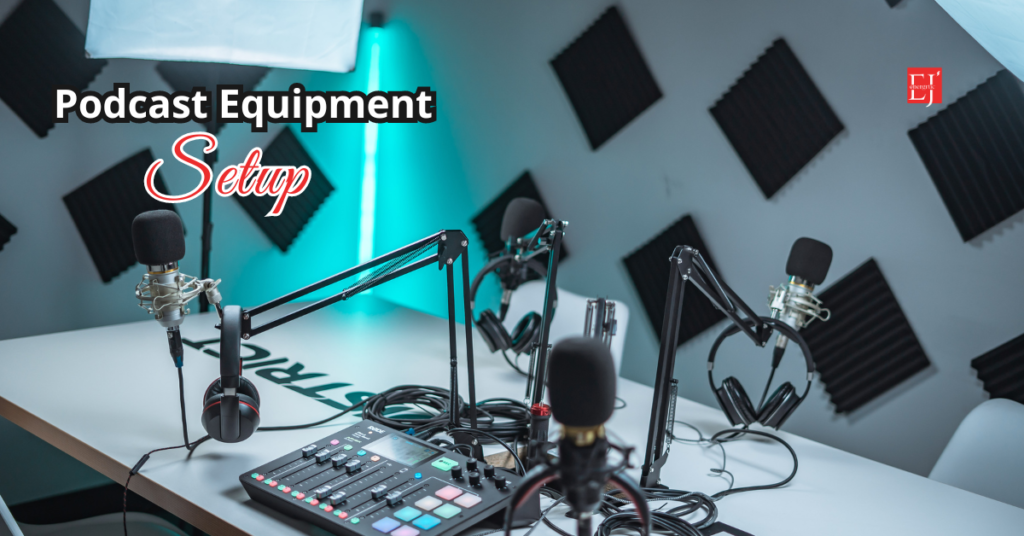
2. Planning Your Podcast Content
Before you hit that record button to start your podcast, you’ll want to spend some time planning out your podcast content. A little planning goes a long way in keeping your episodes structured and engaging.
First, decide on your podcast topic. What’s something you’re passionate about that will also resonate with your audience? The more specific your niche, the easier it’ll be to grow your following.
For example, instead of a general health podcast, you could focus on mental health for busy professionals or wellness tips for new moms.
Once you’ve nailed your topic, figure out your format. Will it be interview-based, solo, or maybe a mix of both? Some podcasts thrive on interview formats, where you bring in guests to share their expertise.
Others are more storytelling-based, with hosts narrating a journey, idea, or personal experience. It’s essential to decide which suits your style and goals best.
Next, create a content schedule. Consistency is key in podcasting, so whether you plan to release episodes weekly, bi-weekly, or monthly, make sure your audience knows when to expect new content. A simple editorial calendar can help keep you organized.
As you plan your episodes, consider mapping out a rough outline for each one. This will help guide you through the main points while allowing flexibility to keep things spontaneous.
Your outline doesn’t need to be set in stone, but it’s a helpful tool to ensure you stay on track and cover the important points.
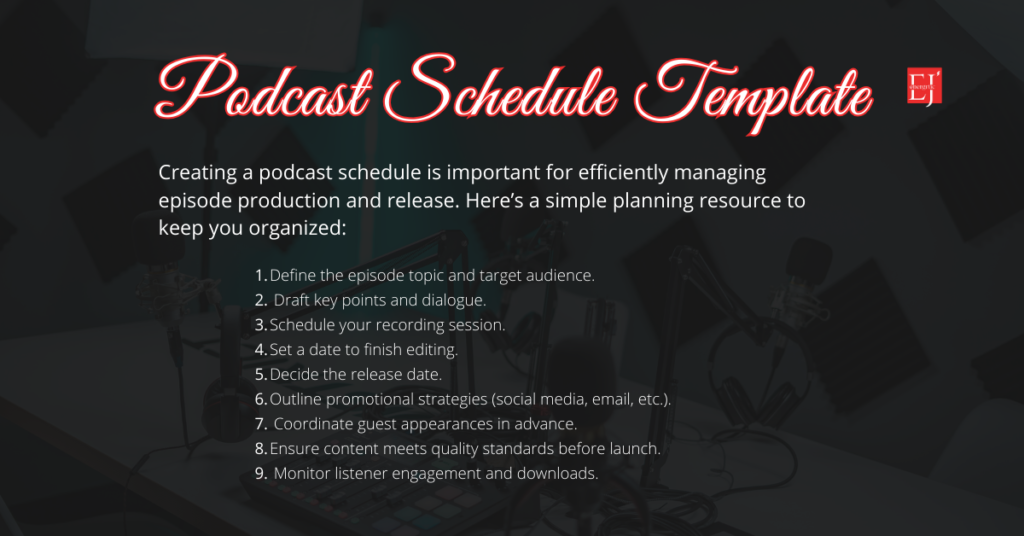
Need a little more help structuring your episodes and finding your niche? Check out my Podcasting Book where I walk you through creating a killer content plan from start to finish.
3. Recording and Editing Your Podcast
So, now that you’ve planned your episodes, and your equipment is ready— it’s time to start recording!
The recording process is simpler than you think, and you don’t need to be a tech pro to get good sound quality.
First, find a quiet space where you can record uninterrupted. Your recording environment makes a significant difference in audio quality. Even though you might have a great microphone, a noisy or echoey room can distract your listeners.
Try recording in a small space with lots of soft materials to absorb sound. If you're stuck, placing a blanket over your recording setup can work wonders!
Before starting, do a quick test recording to ensure your sound levels are clear and even. If you’re hosting guests, test their sound as well, especially if they’re joining remotely.
Many platforms, like Riverside.fm or Zencastr, offer built-in recording tools that simplify capturing remote interviews in high quality.
Editing is an important part of learning how to start a podcast but don’t stress about making it perfect. Remove any long pauses, stammers, or background noise, but don’t aim for perfection—your audience is here for your voice and story, not a flawlessly produced episode.
Simple edits can be done on Audacity or GarageBand, and if you’re willing to invest, software like Alitu can automatically clean up your audio.
4. Promoting Your Podcast for Growth
The moment your podcast is ready to go live, you’ll need a solid promotion plan to grow your audience. Knowing how to start a podcast is one thing, but getting people to listen is another!
Once your episodes are live, the real fun begins—promoting your show! Social media is your best friend here. Share teaser clips, snippets of your favourite moments, or behind-the-scenes shots to build excitement.
Use hashtags related to your niche to attract listeners outside your immediate network.
If you have an email list, fantastic! Don’t forget to use it! Send out an announcement to let your subscribers know about the launch, and encourage them to share it with friends who might be interested.
Another key strategy is cross-promotion. This simply means collaborating with other podcasters to grow your audience. Appear on other shows as a guest, and invite guests from other popular podcasts to yours. This allows you to tap into new listener bases.
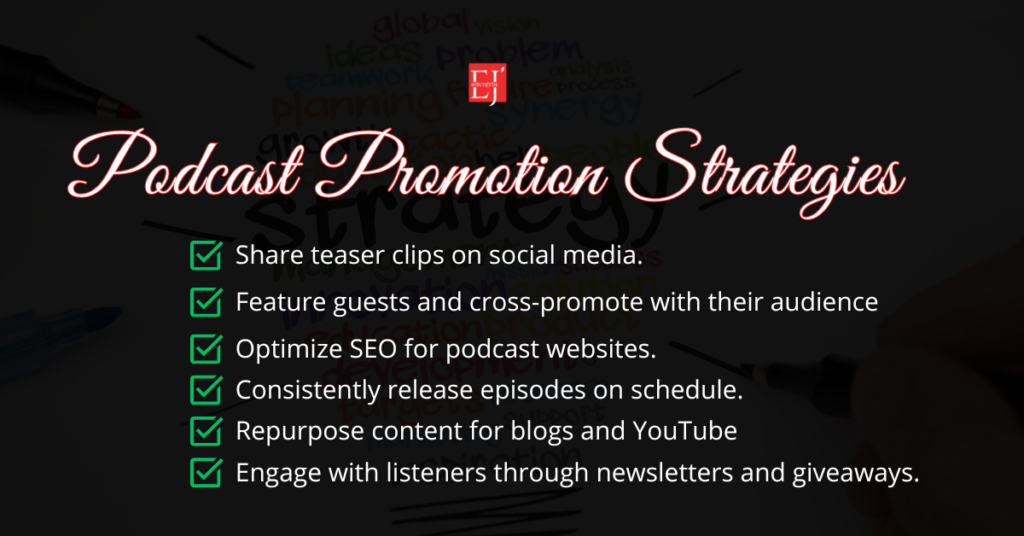
5. Launching Your Podcast
Once everything’s in place, go for it! Remember, getting started is the most important step — not perfection.
Congratulations—you’re almost there! You’ve covered everything from gear to content and promotion. The one thing left is to hit that publish button and share your voice with the world.
Before launching, please remember to do a quick final check:
- Are your episodes edited?
- Is your podcast listed on major platforms?
- Have you scheduled your promotional posts
Are you’re feeling a little nervous or want extra support, be sure to grab my Podcasting Book here. It is packed with all the guidance, tools, and insider tips to ensure your launch is a success!





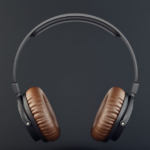




4 Responses
This was very insightful. Anyone who implements what’s in this blog will surely get good results.
Thank you so much for sharing, ma’am.
This was very insightful. Anyone who implements what’s in this blog will surely get good results.
Thank you so much for sharing, ma’am.
Amazing lesson here, Coach. This sounds so interesting and inviting.
I’m glad you got value. Are you going to explore this or share with someone who is looking to start a podcast?